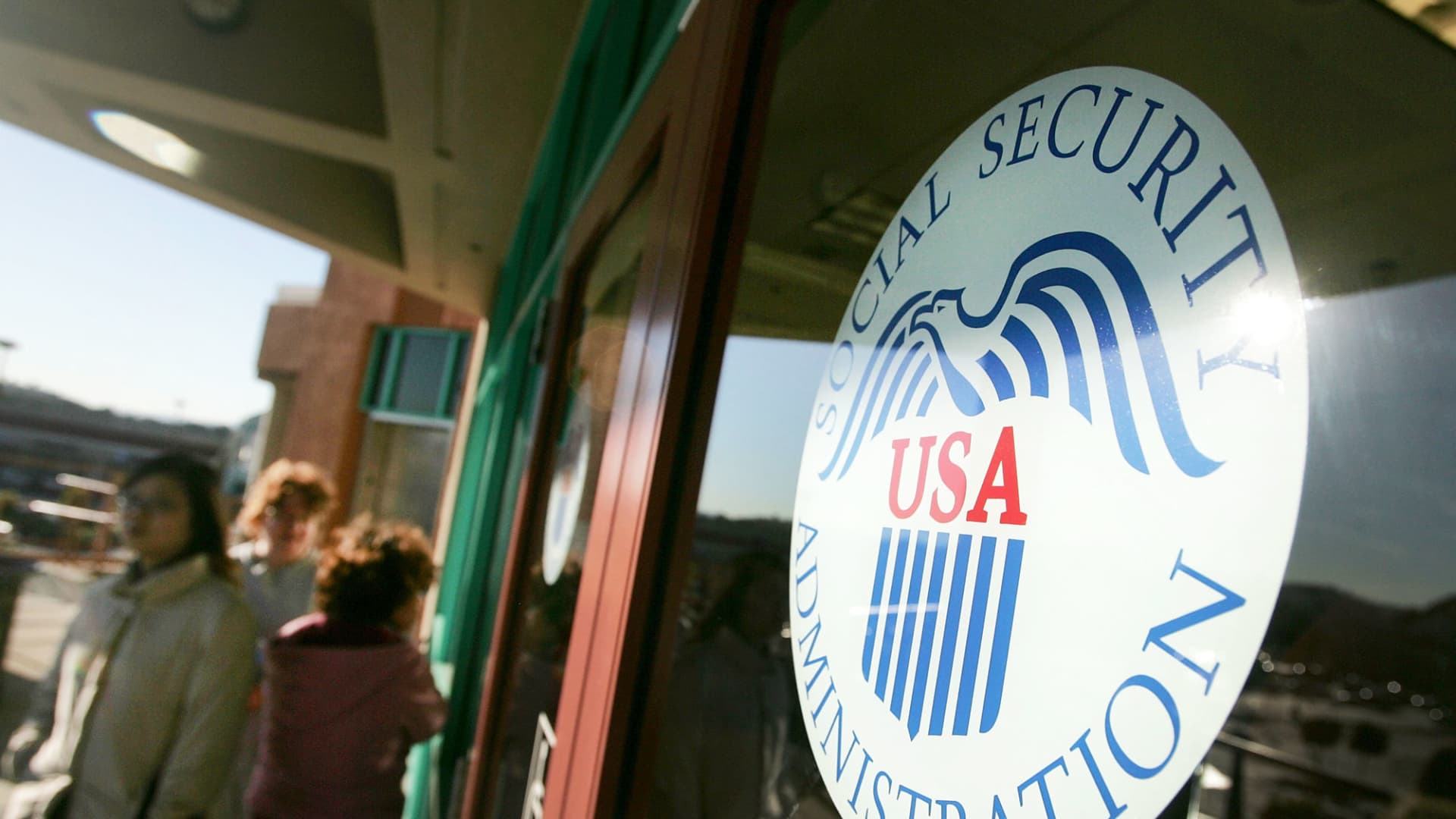The Social Security trust funds that about 67 million Americans rely on for benefits are scheduled to be depleted in 2034, one year earlier than was projected last year, according to the annual trustees’ report released by the Treasury Department on Friday.
Unless Congress takes action, at that time, 80% of scheduled benefits will be payable from the combined funds for old age and survivors insurance and disability insurance.
The new depletion date comes as the trustees updated their projections for the U.S. economy to include recent output and inflation data. The expected levels of gross domestic product and labor productivity were revised down by about 3% for the projected time period, which worsened the outlook for Social Security’s combined funds, according to the report.
Meanwhile, Medicare’s hospital insurance trust fund will be able to pay 100% of scheduled benefits until 2031, three years later than projected last year.
More from Personal Finance:
How to prioritize retirement and emergency savings
Roth IRAs don’t require withdrawals — unless they’re inherited
New tool lets you play at fixing Social Security woes
The new estimates prompted renewed calls for fixes to the programs, which Treasury Secretary Janet Yellen referred to as “bedrock programs that older Americans rely upon for their retirement security.”
“The Biden-Harris Administration is committed to ensuring the long-term viability of these critical programs so that retirees can receive the hard-earned benefits they’re owed,” Yellen said in a statement Friday.
The White House earlier this month laid out a plan to extend the solvency of Medicare’s hospital insurance trust fund, also known as Medicare Part A, which covers hospital, nursing facility and hospice services for eligible beneficiaries.
The proposal aims to extend the hospital insurance fund for 25 years by increasing the Medicare tax rate for incomes over $400,000 while closing loopholes that enable income to be shielded from that tax.
However, the White House has not put forth any specific proposal for resolving Social Security’s funding woes, though President Joe Biden has called for protecting and strengthening the program with his budget.
“Congress must take its responsibility to protect Social Security and Medicare seriously, by developing a comprehensive plan and doing so in a way that is accountable and fully transparent to the American public,” AARP CEO Jo Ann Jenkins said in a statement Friday.
Social Security isn’t ‘going bankrupt’
In its report, the Social Security trustees also issued separate depletion dates projections for the program’s two funds.
The old age and survivors insurance trust fund, which pays benefits to retired workers, their spouses and children and survivors of deceased workers, will be able to pay full benefits until 2033, also one year earlier than reported last year. At that time, 77% of benefits will be payable.
That depletion date is 10 years away — fewer years than projected by the trustees since reforms were implemented in 1983, noted the Peterson Foundation, a nonpartisan organization focused on raising awareness of the nation’s fiscal challenges.
In a statement, Jason Fichtner, chief economist at the Bipartisan Policy Center, a think tank promoting bipartisanship, called the 2033 depletion date “particularly alarming.”
The disability trust fund will be able to pay full benefits through at least 2097, the last year of the report’s projection period.
Yet experts also emphasized there are signs of strength for the program, which had $2.83 trillion in combined trust fund reserves as of the end of 2022.
“Social Security is not ‘going bankrupt’; the program will always be able to pay benefits because of ongoing contributions from workers and employers,” said Max Richtman, president and CEO of the National Committee to Preserve Social Security and Medicare.
The insolvency dates have stayed roughly the same despite the onset of the Covid-19 pandemic and economic upheaval, he noted.
To shore up the funds, lawmakers may generally choose between raising taxes, cutting benefits or a combination of both.
“Congress should act immediately to restore a sense of confidence, both in the government and in the program,” said Nancy Altman, president of Social Security Works, an organization advocating for expansion of the program through more generous benefits and higher taxes.
Don’t claim benefits out of fear
While headlines about closer depletion dates may inspire people to want to claim their benefits earlier, it is generally still best to wait until full retirement age or later, according to Joe Elsasser, a certified financial planner and founder and president of Covisum, a Social Security claiming software company.
“Don’t elect benefits out of fear,” Elsasser said.
Even if a benefit cut does happen, most people will still be better off if they delay, which increases the size of their monthly benefit checks throughout retirement, Elsasser said. Couples especially may benefit from delaying one person’s benefit, he said.
By consulting a financial advisor or Social Security claiming software, you can see how a benefit cut may impact your Social Security claiming decision.
“Many people are surprised that delay is still the best choice,” Elsasser said.
As you plan for retirement, testing your projected income against a full benefit cut is wise as you consider all of the what ifs, he said.
“If your assets are not enough to support your lifestyle even in the presence of a cut, then consider smaller lifestyle cuts now, save more or postpone retirement by a year or two to make up the gap,” Elsasser said.
